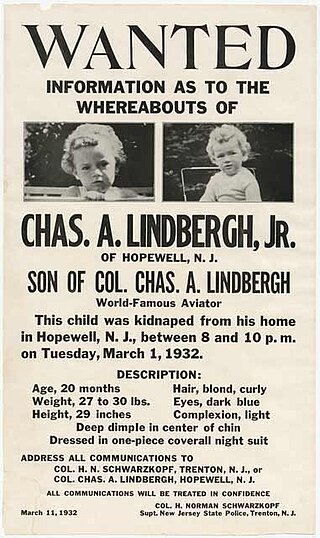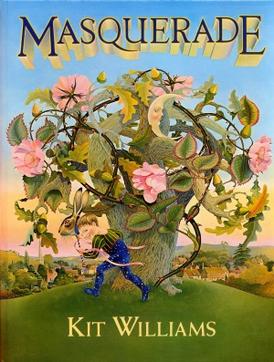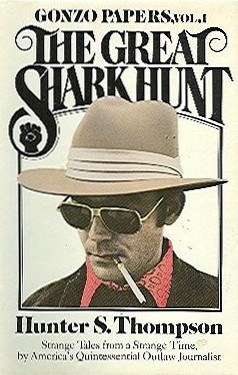
Gonzo journalism is a style of journalism that is written without claims of objectivity, often including the reporter as part of the story using a first-person narrative. The word "gonzo" is believed to have been first used in 1970 to describe an article about the Kentucky Derby by Hunter S. Thompson, who popularized the style. It is an energetic first-person participatory writing style in which the author is a protagonist, and it draws its power from a combination of social critique and self-satire. It has since been applied to other subjective artistic endeavors.

Hunter Stockton Thompson was an American journalist and author who founded the gonzo journalism movement. He rose to prominence with the publication of Hell's Angels (1967), a book for which he spent a year living and riding with the Hells Angels motorcycle club to write a first-hand account of their lives and experiences.

A crossword is a word puzzle that usually takes the form of a square or a rectangular grid of white- and black-shaded squares. The goal is to fill the white squares with letters, forming words or phrases that cross each other, by solving clues which lead to the answers. In languages that are written left-to-right, the answer words and phrases are placed in the grid from left to right ("across") and from top to bottom ("down"). The shaded squares are used to separate the words or phrases.

A confidence trick is an attempt to defraud a person or group after first gaining their trust. Confidence tricks exploit victims using a combination of the victim's credulity, naïveté, compassion, vanity, confidence, irresponsibility, and greed. Researchers have defined confidence tricks as "a distinctive species of fraudulent conduct ... intending to further voluntary exchanges that are not mutually beneficial", as they "benefit con operators at the expense of their victims ".
A null cipher, also known as concealment cipher, is an ancient form of encryption where the plaintext is mixed with a large amount of non-cipher material. Today it is regarded as a simple form of steganography, which can be used to hide ciphertext.

In literature, an epigraph is a phrase, quotation, or poem that is set at the beginning of a document, monograph or section thereof. The epigraph may serve as a preface to the work; as a summary; as a counter-example; or as a link from the work to a wider literary canon, with the purpose of either inviting comparison or enlisting a conventional context.

On March 1, 1932, Charles Augustus Lindbergh Jr., the 20-month-old son of aviators Charles Lindbergh and Anne Morrow Lindbergh, was abducted from his crib in the upper floor of the Lindberghs' home, Highfields, in East Amwell, New Jersey, United States. On May 12, the child's corpse was discovered by a truck driver by the side of a nearby road.
The Atlanta murders of 1979–1981, sometimes called the Atlanta child murders, was a series of murders committed in Atlanta, Georgia, between July 1979 and May 1981. Over the two-year period, at least 28 children, adolescents, and adults were killed.
United States v. X-Citement Video, Inc., 513 U.S. 64 (1994), was a federal criminal prosecution filed in the United States District Court for the Central District of California in Los Angeles against X-Citement Video and its owner, Rubin Gottesman, on three charges of trafficking in child pornography, specifically videos featuring the underaged Traci Lords. In 1989, a federal judge found Gottesman guilty and later sentenced him to one year in jail and a $100,000 fine.

Raoul Duke is the partially fictionalized author surrogate character and sometimes pseudonym used by Hunter S. Thompson as the main character and antihero for many of his works. He is perhaps best known as the narrator for his 1971 autobiographical novel Fear and Loathing in Las Vegas. The book was originally written under the name Raoul Duke. The character wears a bucket hat and yellow tinted aviator glasses.

Masquerade is a picture book, written and illustrated by Kit Williams and published in August 1979, that sparked a treasure hunt by including concealed clues to the location of a jewelled golden hare that had been created and hidden somewhere in Britain by Williams. The book became the inspiration for a genre of books known today as armchair treasure hunts.

Culture of fear is the concept that people may incite fear in the general public to achieve political or workplace goals through emotional bias. It was developed as a sociological framework by Frank Furedi and has been more recently popularized by the American sociologist Barry Glassner.

Fear and Loathing: On the Campaign Trail '72 is a 1973 book that recounts and analyzes the 1972 presidential campaign in which Richard Nixon was re-elected President of the United States. Written by Hunter S. Thompson and illustrated by Ralph Steadman, the book was largely derived from articles serialized in Rolling Stone throughout 1972.

The Great Shark Hunt is a book by Hunter S. Thompson. Originally published in 1979 as Gonzo Papers, Vol. 1: The Great Shark Hunt: Strange Tales from a Strange Time, the book is a roughly 600-page collection of Thompson's essays from 1956 to the end of the 1970s, including the rise of the author's own gonzo journalism style as he moved from Air Force and sports beat-writing to straight-ahead political commentary. It is the first of what would become four volumes in The Gonzo Papers series.

Callan is a British action-drama spy television series created by James Mitchell, first airing between 1967 and 1972. It starred Edward Woodward as David Callan, an agent of a state secret service dealing with internal security threats to the United Kingdom. Though portrayed as having responsibilities similar to those of the real-life MI5, Callan's fictional "Section" has carte blanche to use the most ruthless of methods. In the storylines interrogation is by means of torture, while extrajudicial killings are so routine they have a colour-coded filing system. With the possible exception of La Femme Nikita, no TV series has ever presented a Western government agency in so sinister a light as Callan. Despite being an assassin who stays in the socially isolating job because it is the only thing he is good at, Callan is a sympathetic character by comparison to his sadistic upper-class colleagues and implacable superiors. The downbeat cover for the Section's headquarters was the scrap metal business of "Charlie Hunter". Produced by ABC Weekend TV and Thames Television, the programme proved extremely popular; as well as four series between 1967 and 1972 there was a a feature-length film in 1974 and a TV film in 1981.

Fear and Loathing in Las Vegas: A Savage Journey to the Heart of the American Dream is a 1971 novel in the gonzo journalism style by Hunter S. Thompson. The book is a roman à clef, rooted in autobiographical incidents. The story follows its protagonist, Raoul Duke, and his attorney, Doctor Gonzo, as they descend on Las Vegas to chase the American Dream through a drug-induced haze, all the while ruminating on the failure of the 1960s countercultural movement. The work is Thompson's most famous book, and is noted for its lurid descriptions of illicit drug use and its early retrospective on the culture of the 1960s. Thompson's highly subjective blend of fact and fiction, which it popularized, became known as gonzo journalism. Illustrated by Ralph Steadman, the novel first appeared as a two-part series in Rolling Stone magazine in 1971 before being published in book form in 1972. It was later adapted into a film of the same title in 1998 by director Terry Gilliam, starring Johnny Depp and Benicio del Toro, who portrayed Raoul Duke and Dr. Gonzo, respectively.
Bibliography of works by American author and journalist Hunter S. Thompson.

In Eastern Orthodox Christian tradition the Myrrhbearers are the individuals mentioned in the New Testament who were directly involved in the burial or who discovered the empty tomb following the resurrection of Jesus. The term traditionally refers to the women with myrrh who came to the tomb of Christ early in the morning to find it empty. In Western Christianity, the women at the tomb, the Three Marys or other variants are the terms normally used. Also included are Joseph of Arimathea and Nicodemus, who took the body of Jesus down from the cross, embalmed it with myrrh and aloes, wrapped it in clean linen, and placed it in a new tomb..
Angela Calomiris was an American photographer who became a secret FBI informant within the Communist Party USA (CPUSA) under the name Angela Cole. Calomiris spent seven years undercover in the party from February 1942 until April 26, 1949, when she was called to testify in the trial of eleven CPUSA leaders, who were convicted of conspiracy to advocate the overthrow of the US government on October 13, 1949.

Hunters is an American conspiracy drama television series created by David Weil. It premiered on February 21, 2020, on Amazon Prime Video. In August 2020, the series was renewed for a second and final season which premiered on January 13, 2023.















